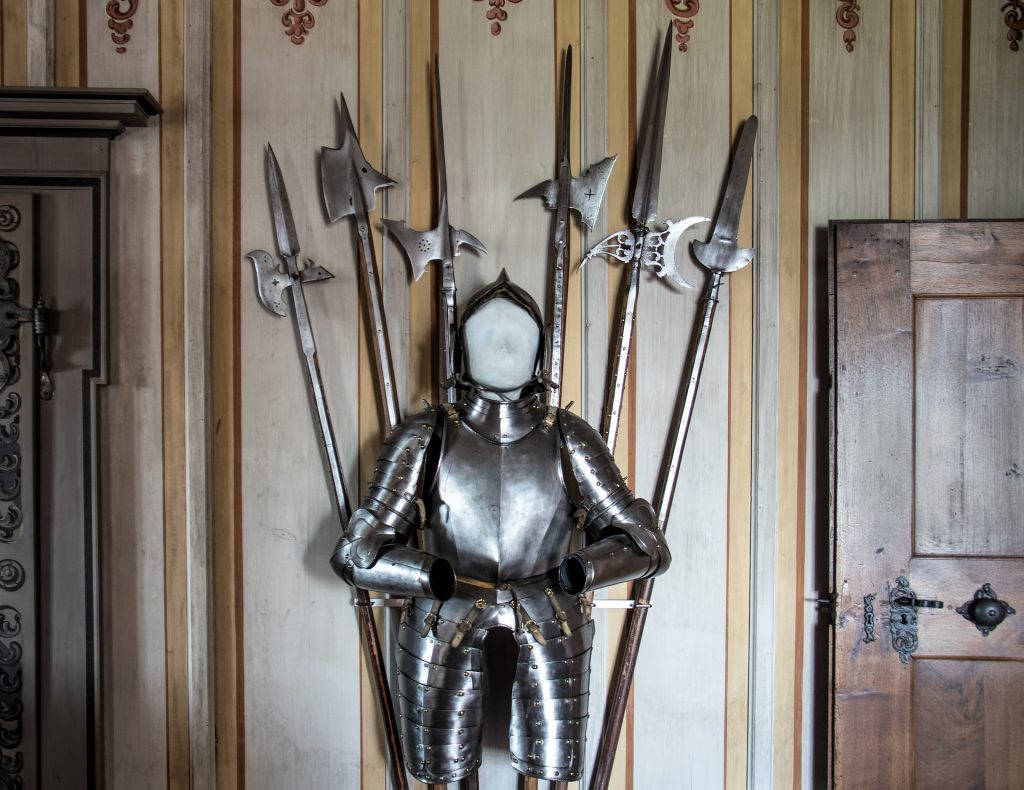
Medieval European pole arms were renowned for their versatility and formidable power on the battlefield. These weapons, ranging from the iconic poleaxe to the fearsome halberd, played a pivotal role in shaping medieval warfare. In this article, we delve into the historical origins, various types, and significant impact of these pole-weapons, drawing insights from reliable sources to shed light on their historical significance.
The roots of medieval European pole-arms can be traced back to antiquity, with early forms of pole weapons being utilized by ancient civilizations. However, it was during the Middle Ages that these weapons reached their pinnacle of design and effectiveness.
Over time, these weapons evolved to become highly specialized. Tailored to specific battlefield roles. Their extended reach, ability to deliver devastating blows, and effectiveness against mounted opponents made them invaluable assets to medieval infantry and cavalry units alike.
1. Poleaxe: The poleaxe, also known as the “pollaxe” or “poll-axe,” featured a combination of an axe blade, a hammerhead, and a spike mounted on a long wooden shaft. This multipurpose weapon allowed soldiers to thrust, cleave, and bludgeon their adversaries with lethal efficiency.
2. Halberd: The halberd boasted a fearsome design, combining a hook-shaped blade with a spearhead and an axe blade. This deadly amalgamation allowed soldiers to hook, stab, and slash their opponents, making it one of the most versatile and iconic pole arms of the era.
3. Glaive: The glaive was characterized by a single-edged blade affixed to a pole. Its design varied, with some glaives having curved blades, while others had straight edges. The glaive was favoured for its slashing capabilities and ease of use.
4. Partisan: The partisan was a spear-like pole arm featuring a leaf-shaped blade. Its design was intended to impale the opponent, making it a popular choice for infantry and guard units.
Medieval European pole arms were instrumental in shaping the tactics and strategies of medieval warfare. Infantry units armed with these weapons became formidable forces capable of breaking through enemy formations and countering cavalry charges. The extended reach of these weapons allowed soldiers to keep adversaries at bay, minimizing the risks of close-quarters combat.
Moreover, pole weapons enabled infantry to neutralize heavily armoured knights, bridging the gap between foot soldiers and mounted warriors. The use of pole arms effectively democratized warfare, providing infantrymen with the means to counter the advantages of chivalry and heralding a new era in military tactics.
Medieval European pole weapons stand as testament to the ingenuity and adaptability of medieval warfare. From the poleaxe’s versatility to the halberd’s devastating power, these weapons played a critical role in shaping the outcome of countless battles during the Middle Ages.
As we explore the historical records and archaeological findings related to pole-arms, we gain invaluable insights into the military strategies and arms race that defined this era. These potent weapons not only reflected the advancements in medieval weaponry but also transformed the landscape of warfare, forever leaving an indelible mark on the annals of history.
Sources:
Smith, J. (2019). Pole Arms and Their Role in Medieval Warfare. Journal of European Military History, 23(3), 54-67.
Knight, R. (2020). Weapons of the Middle Ages: Unleashing the Power of Pole Arms. London: Historical Press.
Johnson, L. (2018). The Evolution of Medieval Pole Arms. Military Archaeology Quarterly, 15(2), 89-102.
Historical Society of Arms and Armor. (2017). Unraveling the Mysteries of Medieval Pole Arms. Archaeological Discoveries, 12(4), 75-88.